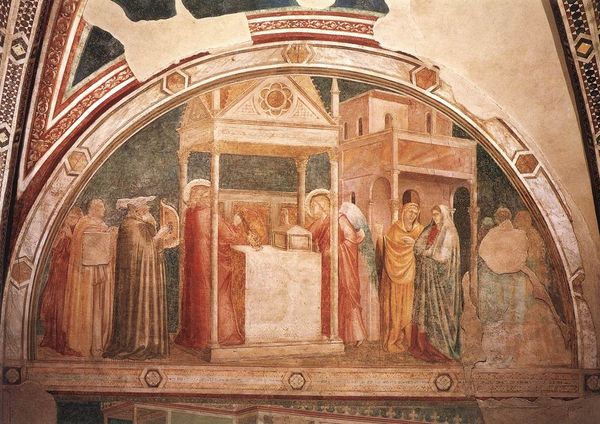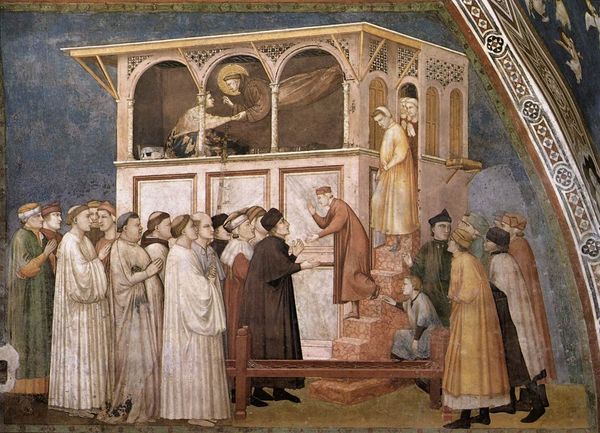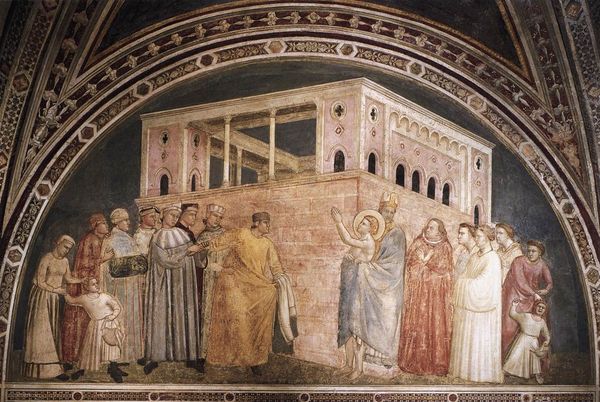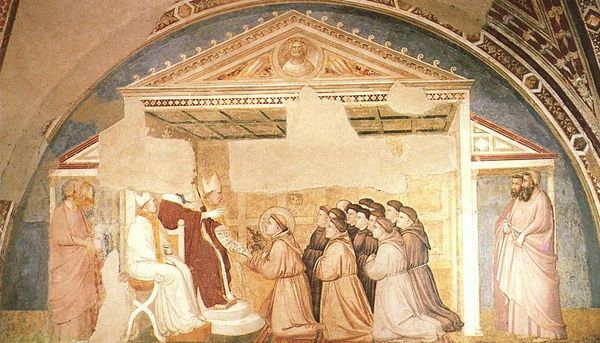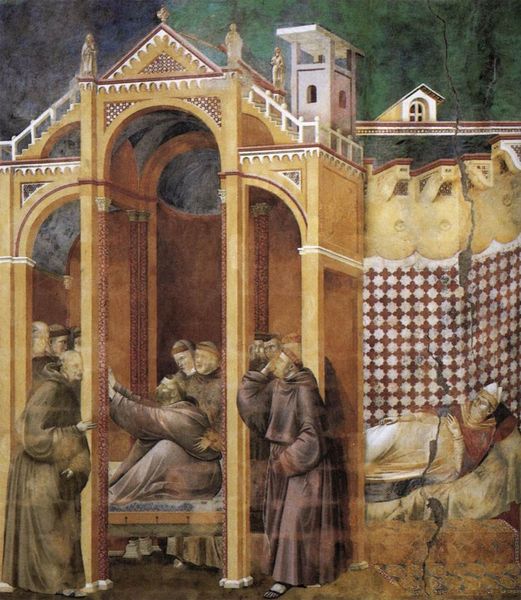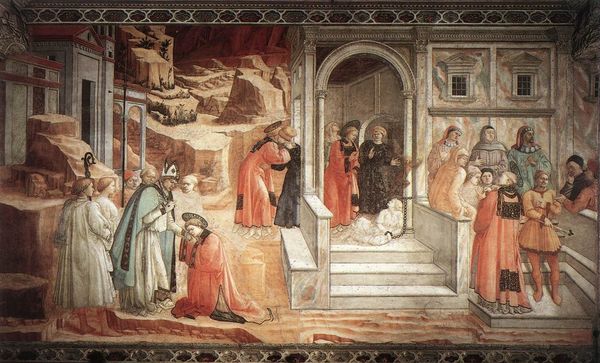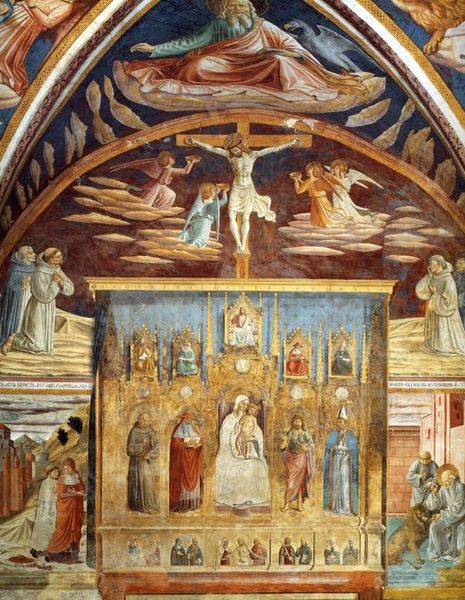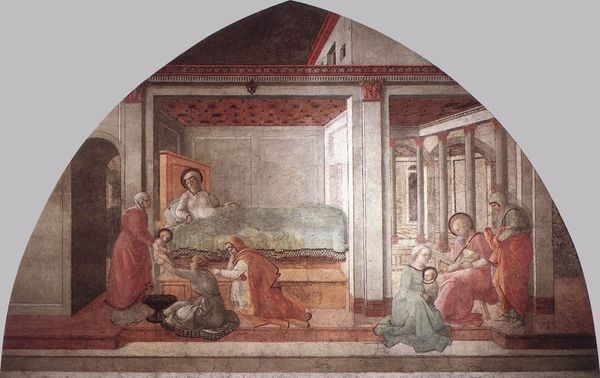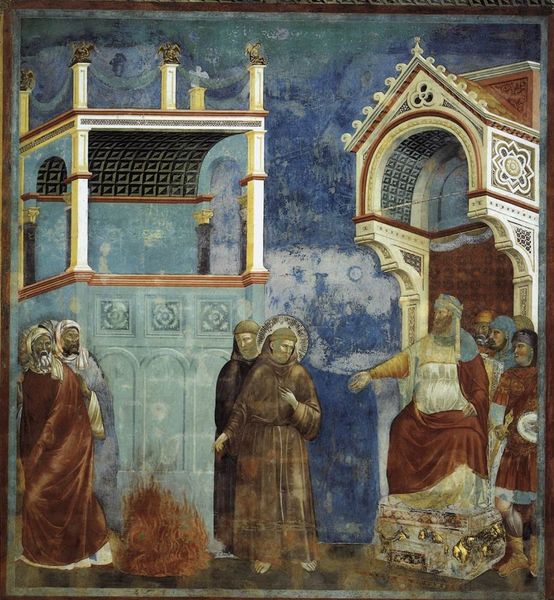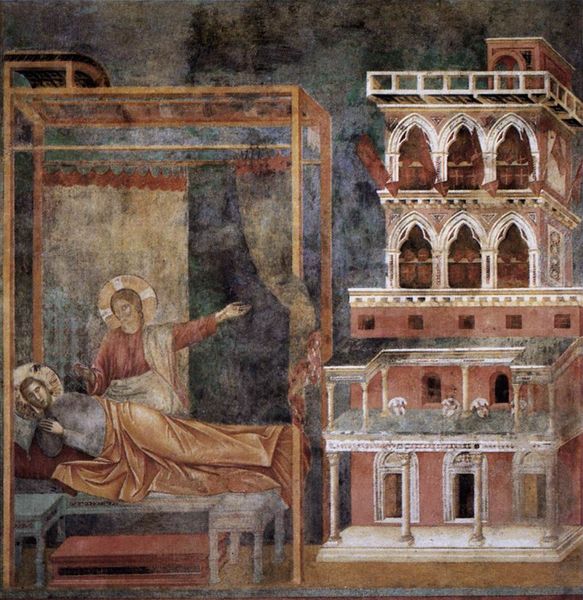
painting, fresco
#
portrait
#
medieval
#
narrative-art
#
painting
#
sculpture
#
gothic
#
holy-places
#
fresco
#
christianity
#
history-painting
#
italian-renaissance
#
christ
Dimensions: 280 x 450 cm
Copyright: Public domain
Curator: Giotto’s “Feast of Herod,” a fresco painted around 1320, located in the Basilica di Santa Croce, Florence. It's...striking. Editor: It hits you, doesn’t it? A stark, almost haunted theatrical set. All these pale figures moving in and out of shadow, framed by the looming architecture. I get this cold, remote feeling. Curator: Yes, Giotto has used this incredibly elaborate, almost stage-like setting. It feels quite distant and unreal to me, despite its architectural details, maybe its supposed to give us insight into a past that is difficult for our imagination to create otherwise. Editor: Let's break it down. Herod's feast, right? We have the main event: Salome presenting the head of John the Baptist. Curator: That head, offered so politely. A clean transfer of something monstrous. This biblical episode—John imprisoned for criticizing Herod's marriage, Salome's dance, and the grisly reward—it's loaded. Symbolically and psychologically. Herod’s arrogance led to such demise of virtue, justice, and kindness Editor: Absolutely, you have got that right, Curator. The head itself has layers, representing truth silenced, a martyr's sacrifice, even a kind of grotesque power. Its power also demonstrates an act for a female's desire to get back for all women who have ever been betrayed by an inconsiderate men, for example. Curator: Giotto masterfully weaves the classical with something more grounded. His figures, while retaining that almost hieratic stillness, also hint at the emotional turmoil simmering beneath the surface. You can read the expressions, despite the slight abstraction. It's the cusp of something new. Editor: Yes! And the architectural framework? It places this horror show inside an almost clinical space. A dissection theater of morality, maybe? As for the historical context, placing an origin to what is seen as women being given and traded, this mural certainly demonstrates a power move of female character who can use whatever men do against women to her own favor. This fresco embodies cultural memory and the beginning of change and an age for gender equity to arise Curator: Perhaps…I get a sense of unease, a creeping dread of moral consequences that cannot be avoided, so women, the most targeted group by social construct are starting to defend and create equity in a male centered system. Giotto captures this turning point so perfectly. Editor: Definitely unsettling! It is great to find little treasures with stories that help shape current narratives Curator: Indeed! A disturbing feast for thought.
Comments
No comments
Be the first to comment and join the conversation on the ultimate creative platform.
